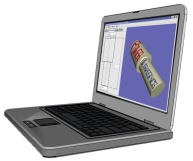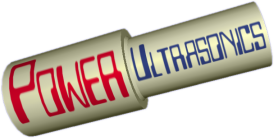A new online ultrasonics components store has just opened at www.UltrasonicsWorld.com. Check their amazing prices for replacement ultrasonics components, fully compatible with the major manufacturers' originals at a fraction of the cost.
You are here
Ultrasonic cleaning
Cleaning was one of the earliest industrial applications of ultrasonics. Objects to be cleaned are placed in a bath of fluid which is violently agitated by a number of ultrasonic transducers. The fluid may be water or solvent based, depending on the application. Traditionally the transducers were fitted around the walls of the cleaning bath, but some modern equipment uses an external transducer attached to a resonant probe which transmits the vibrations to the fluid.
The ultrasonics may affect the cleaning process in several ways. Rapid movement in the fluid can help to de-wet surfaces, overcoming surface tension, and may also help to dislodge dirt particles and carry them away from the surface. Cavitation is probably the most interesting (and potent) effect - the shock waves generated by tiny implosions of vapour bubbles can be devastating at close range. The bubbles are so tiny that they can penetrate even the smallest crevices, making the process ideal for parts which could not be cleaned by other methods. Note also that the process must be well controlled to minimise erosion of the surfaces of the parts being cleaned. The standard test of ultrasonic intensity in a cleaning bath is to immerse a standard foil strip for a set time, then remove it and count the number of holes!

